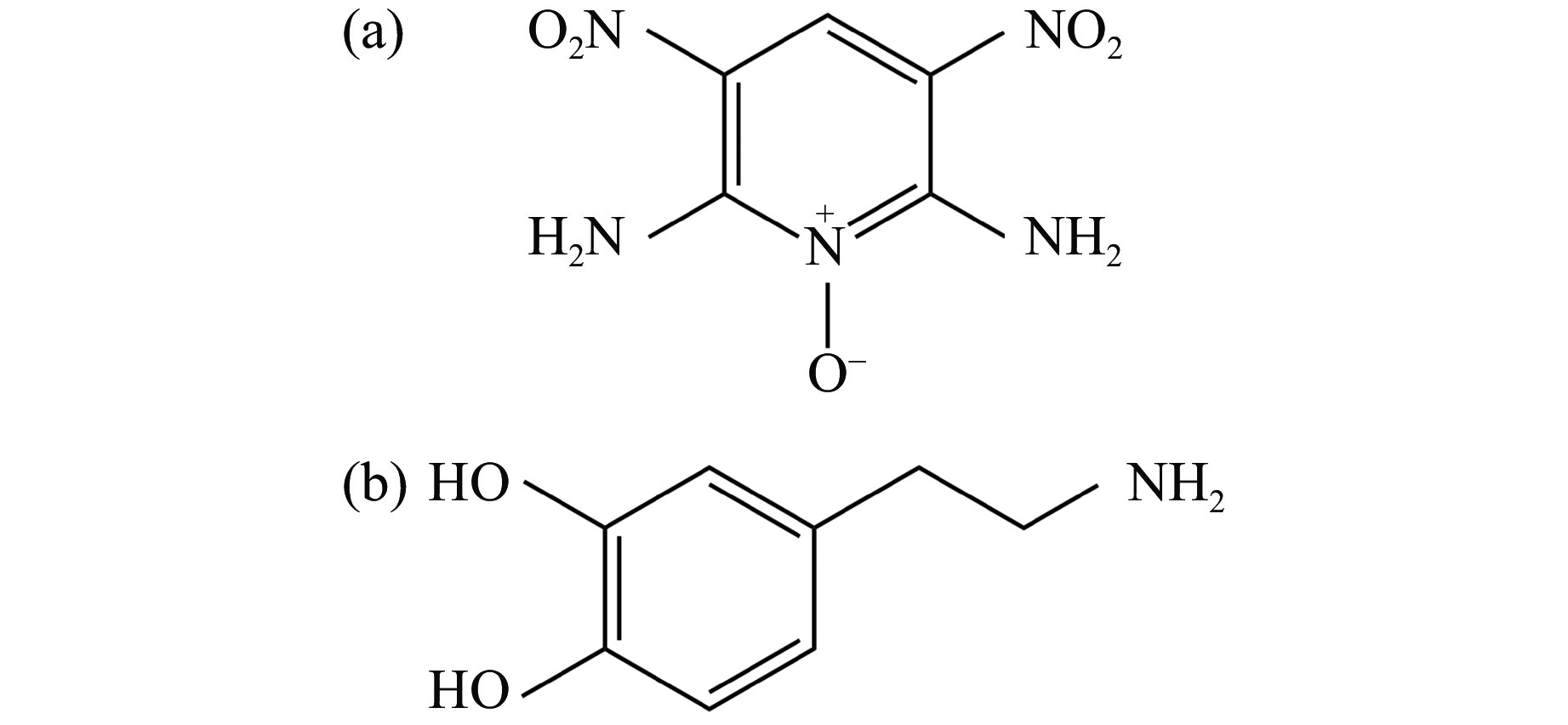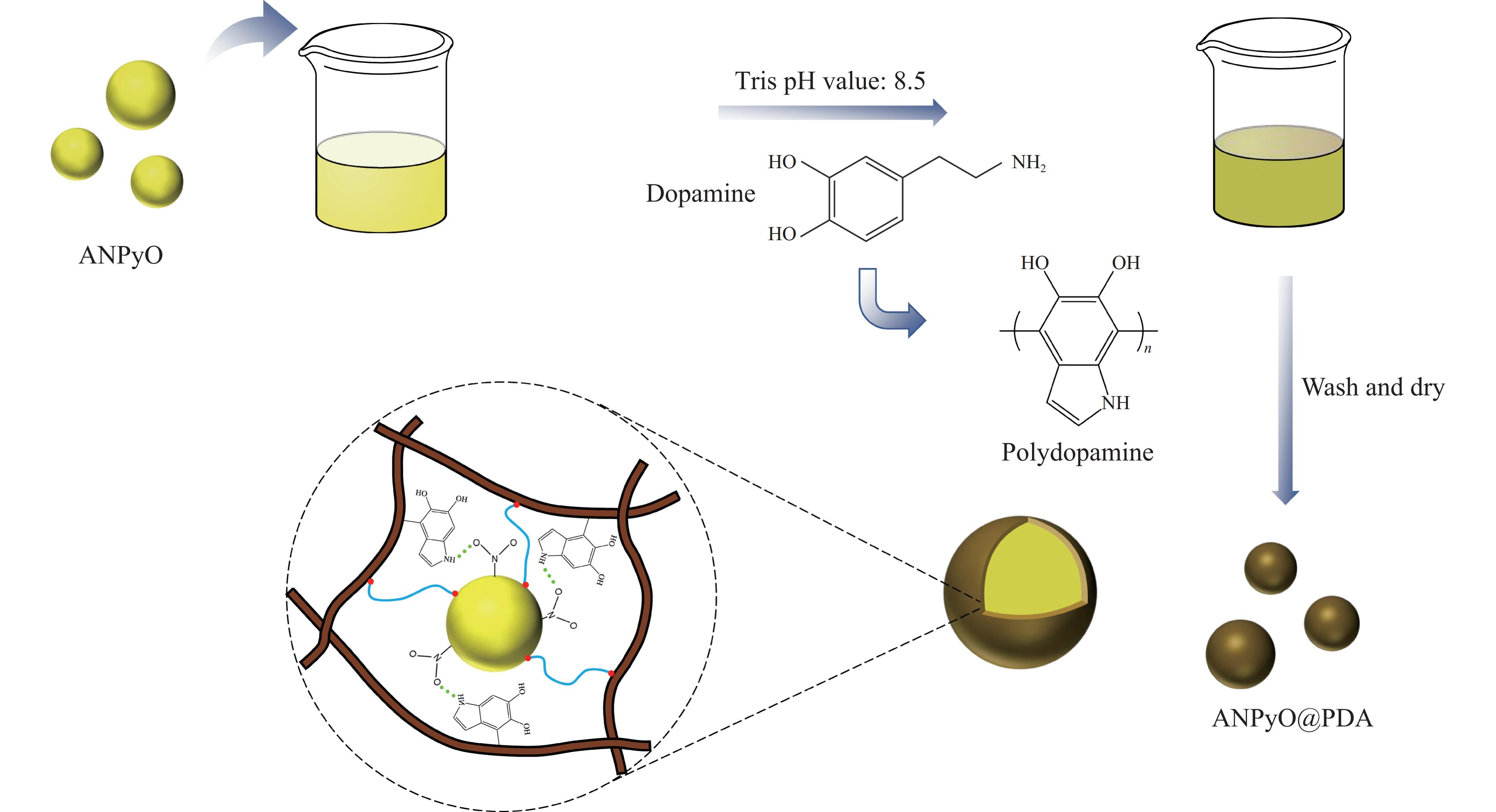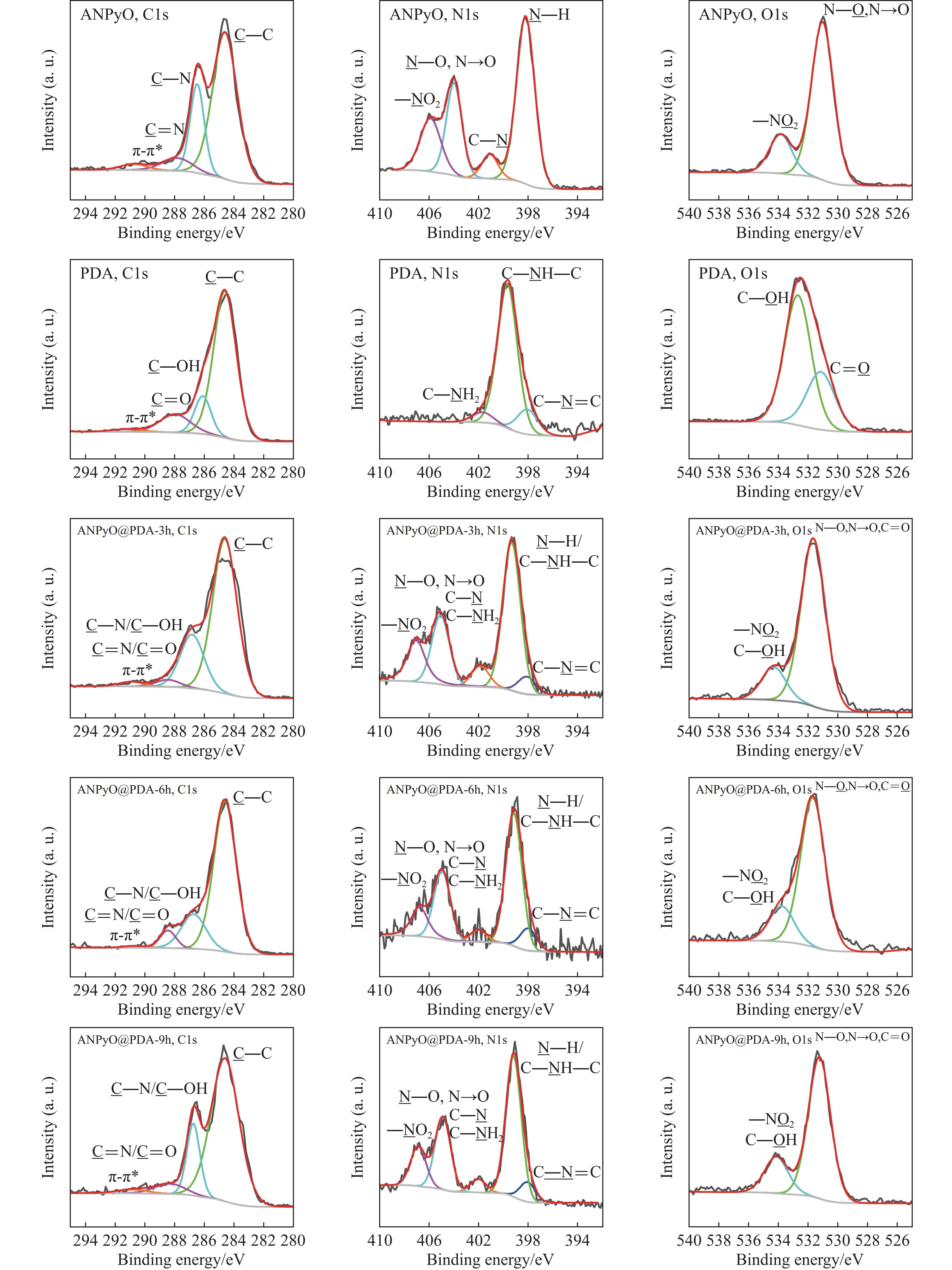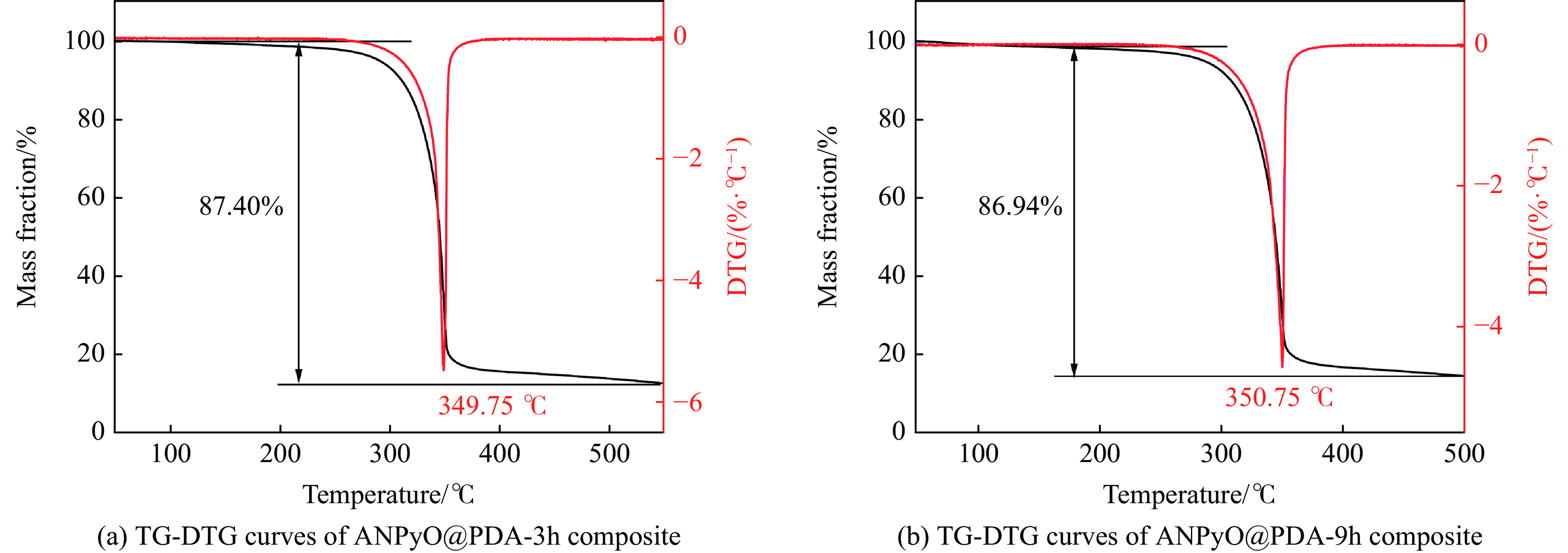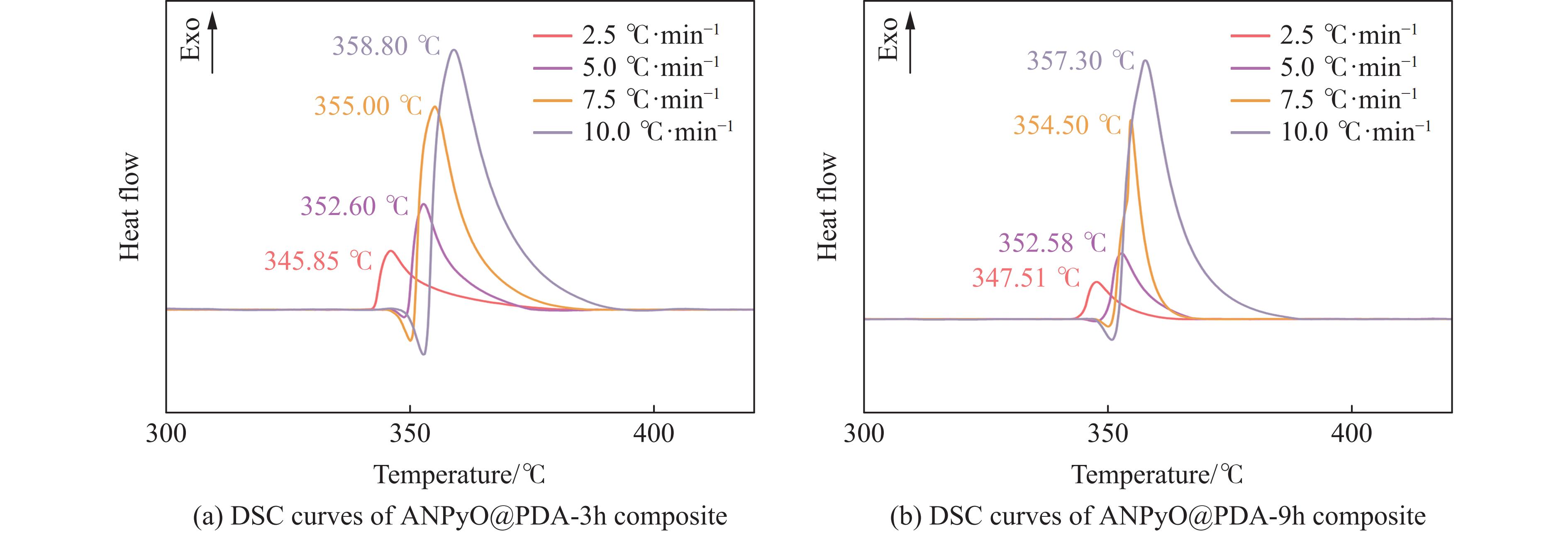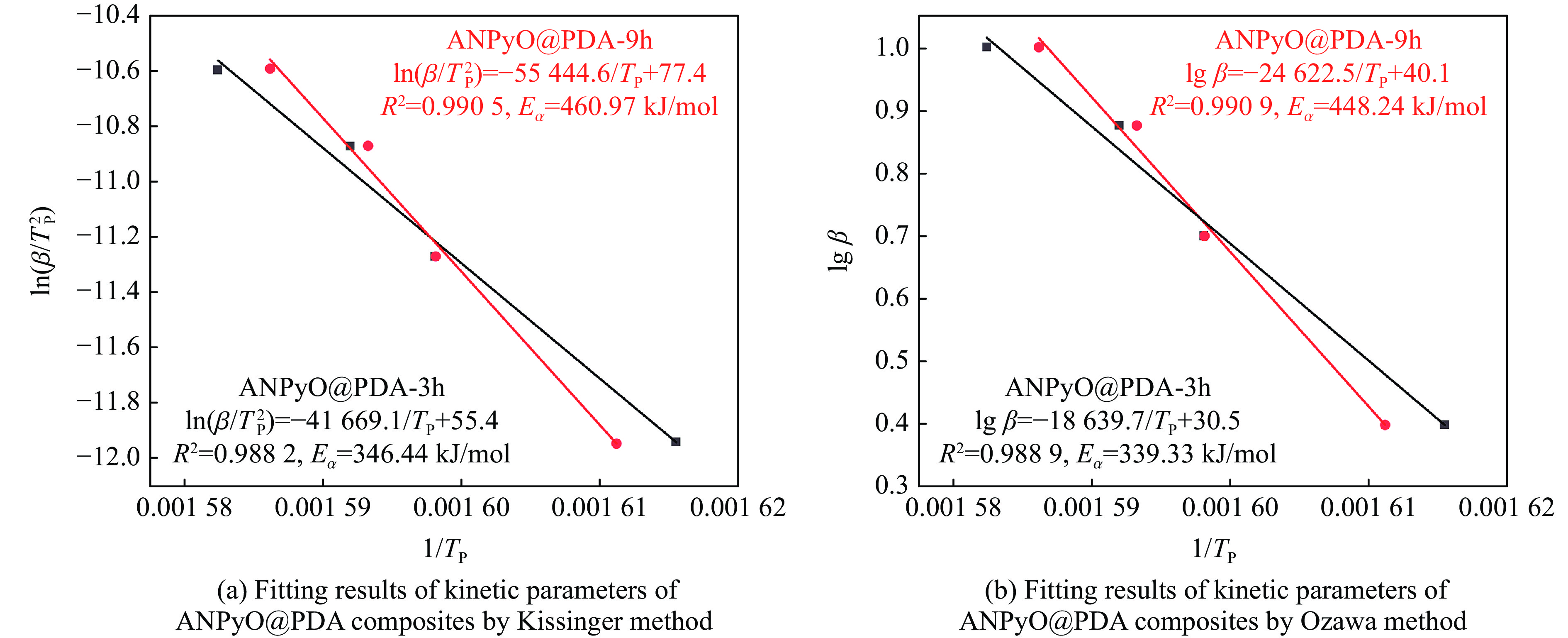Phase Transition Mechanism of Graphite to Nano-Polycrystalline Diamond Resolved by Molecular Dynamics Simulation
-
摘要: 以往研究发现,纳米多晶金刚石的硬度可超越单晶金刚石,因此利用石墨制备纳米多晶金刚石获得了广泛研究。然而,由石墨碳源制备的金刚石同时具有均匀精细结构和层状结构,其形成机理尚未获得很好的理解。为此,针对不同层间距的石墨,进行了一系列分子动力学模拟。研究发现,不同受压情况下石墨存在不同的相变行为,即在马氏体转变下获得片层状金刚石,而在扩散型相变下获得无特定取向的精细纳米金刚石。在静水压条件下,或者[002]方向上的压力大于横向压力且石墨层滑移不受限时,石墨将转化为层状结构立方金刚石;当[002]方向上的压力大于横向压力,但石墨层横向滑移受阻时,石墨转化为多晶六方和立方金刚石混合物;当最大压力方向在[210]或[010]方向时,石墨转化为无特定取向的均匀多晶金刚石。通过原子运动的微观尺度分析,揭示了由石墨制备的纳米多晶金刚石同时具有均匀精细结构和层状结构的机理,有望为大规模合成超硬纳米多晶金刚石提供理论支持。Abstract: Previous studies have found that the nano-polycrystalline diamond (NPD) is harder than single crystal diamond, consequently NPD prepared from graphite has been widely studied. Previous experiments revealed that the NPD originated from graphite contains both homogeneous fine structure and lamellar structure, while the mechanism has not been fully understood. In this work, molecular dynamics simulation was carried out, in which graphite models with different interlayer spacings were built up and compressed. The results showed that the graphite under different compression conditions exhibit different phase transition behaviors, namely, lamellar diamond is obtained under martensite transformation, and fine nanodiamonds without a specific orientation are obtained under diffusive transformation. Under hydrostatic pressure, or, if the slip of the graphite layer is not limited and [002] is the maximum pressure direction, the graphite converts into lamellar cubic diamond; if the maximum pressure is in [210] or [010] direction, the phase transition product is the polycrystalline diamond; if the maximum pressure is in [002] direction, the slip of graphite layers is hindered, the product is a mixture of polycrystalline hexagonal and cubic diamond. The microscopic analysis of atomic motion reveals the formation mechanism of NPD transformed from graphite with homogeneous fine structure and lamellar structure, which is expected to provide insights for large-scale synthesis of superhard NPD.
-
Key words:
- nano-polycrystalline /
- diamond /
- graphite /
- phase transition /
- molecular dynamics /
- high pressure and high temperature
-
含能材料作为一种重要的能源被广泛应用于军事领域,安全弹药是目前武器装备系统的发展目标,研制高能钝感炸药或者提升现有高能炸药的热稳定性,有利于提高武器弹药在生产、运输、储存、使用过程中的安全性,减少人员伤亡和经济损失[1]。Ritter等[2]通过硝化2,6-二氨基-3,5-二硝基吡啶(ANPy),进一步氧化得到2,6-二氨基-3,5-二硝基吡啶氧化物(ANPyO)。ANPyO是一种新型高能炸药,感度低于常用的黑索金(RDX)和2,6-二苦氨基-3,5-二硝基吡啶(PYX),综合性能与1,3,5-三氨基-2,4,6-三硝基苯(TATB)接近,因而在混合炸药、起爆药和推进剂等领域有着巨大的应用前景。成健等[3]、何志伟等[4–6]对ANPyO的合成、精制及性能开展了研究。Liu等[7]、张蓉仙等[8]研究了ANPyO含能配合物的合成及热分解行为。何志伟等[9–10]采用氟橡胶和丁腈橡胶(NBR)作为黏结剂包覆ANPyO,改善了ANPyO的机械感度。王洋等[11]采用丁腈橡胶作为黏结剂研究了ANPyO/NBR的热分解行为,计算了热分解动力学参数和机理函数,评价了其热安全性。
高能量特性与使用安全性是含能材料的固有矛盾,目前,含能材料的降感手段主要有重结晶、共晶、细化以及通过惰性材料包覆制备高聚物黏结炸药(PBX)[12]。与炸药的储存、运输和使用密切相关,黏结剂的加入会对含能材料产生影响,与炸药不相容或者发生反应的黏结剂均会改变炸药的热稳定性。近年来,聚多巴胺(polydopamine,PDA)包覆含能晶体微胶囊的制备及其性能受到越来越多的关注。多巴胺(dopamine,DA)是一种含有儿茶酚(多巴)和氨基(赖氨酸)的小分子化合物。受海洋生物贻贝强化学黏附的启发,2007年,Lee等[13]发现多巴胺在弱碱性环境下可以发生氧化自聚合,几乎可以在任何固体表面产生一层黏附的聚多巴胺涂层。多巴胺的氧化自聚合可在水溶液中进行,反应条件温和可控、简易方便、绿色环保、操作安全,适用于炸药晶体的表面改性,可以作为先进功能涂层材料的良好候选材料。Gong等[14]利用PDA包覆奥克托今(HMX),HMX表面的刚性PDA壳层能抑制HMX的晶相转变,提高HMX的热稳定性。Yu等[15]利用PDA包覆2,6-二氨基-3,5-二硝基吡嗪-1-氧化物(LLM-105),比较了PDA包覆层在不同加热条件下对LLM-105热稳定性的影响。祝青等[16]利用PDA对含能材料进行表面改性,发现PDA对含能材料的降感、力学性能和工艺稳定性提升具有显著的界面改性作用。杨学林等[17]采用PDA对六硝基六氮杂异伍兹烷(CL-20)进行表面改性,PDA壳层有效抑制了CL-20的转晶,提高了CL-20的活化能和热稳定性。
目前,大多数含能材料研究主要针对RDX、HMX、CL-20等开展,ANPyO作为一种极具应用前景的含能材料,其表面改性鲜有研究,为此,本研究通过PDA包覆ANPyO,对比研究不同包覆时间的PDA包覆层对ANPyO的包覆效果,为PDA在含能材料表面改性的应用及改善含能材料热稳定性提供新的视角。
1. 实 验
1.1 试剂与仪器
实验所用试剂:ANPyO,实验室自合成亮黄色粉末,密度为1.878 g/cm3;盐酸多巴胺(dopamine hydrochloride,纯度98.0%),Macklin生化科技有限公司生产;(三羟甲基)氨基甲烷(Tris,纯度99.0%),国药集团化学试剂有限公司生产;无水乙醇(分析纯,纯度不低于99.7%),国药集团化学试剂有限公司生产;盐酸;去离子水。ANPyO和多巴胺的分子结构分别如图1(a)和图1(b)所示。
实验所用仪器:扫描电子显微镜(scanning electron microscope,SEM),FlexSEM1000型,日本Hitachi公司;X射线衍射仪(X-ray diffraction,XRD),Smartlab SE型,日本理学;傅里叶变换红外光谱仪(Fourier transform-infrared spectrometer,FT-IR),Nicolet iS50型,美国Thermo Fisher Scientific公司;X射线光电子能谱仪(X-ray photoelectron spectrometer,XPS),ESCALAB 250Xi+型,美国Thermo Fisher Scientific公司;同步综合热分析仪,TGA-DSC-1型,梅特勒-托利多国际贸易有限公司;pH计,testo 206pH2型,德国testo公司;磁力搅拌器;离心机;烘箱;分析天平。
1.2 样品制备
1.2.1 ANPyO@PDA复合材料的制备
首先,称取0.363 g三羟甲基氨基甲烷(Tris)加入300 mL去离子水中,再用稀盐酸调节溶液至pH值为8.5,配制质量浓度为1.21 g/L的Tris-HCl缓冲溶液,为多巴胺的氧化自聚合提供弱碱性条件;然后,称取3 g ANPyO加入制备的缓冲溶液中,机械搅拌15 min,使晶体颗粒完全分散;最后,称取0.6 g盐酸多巴胺加入Tris-HCl缓冲溶液中,采用500 r/min的转速进行磁力搅拌,通过改变包覆时长(3、6、9 h)调整包覆壳层的厚度。达到反应时间后,用去离子水和无水乙醇反复洗涤3~5遍样品,直至洗出液为中性,将试样在60 ℃下干燥24 h,将制备样品分别标记为ANPyO@PDA-3h、ANPyO@PDA-6h、ANPyO@PDA-9h,制备过程如图2所示。
1.2.2 PDA的制备
采用1.2.1节中的方法制备Tris-HCl缓冲溶液,称取2 g盐酸多巴胺加入Tris-HCl缓冲溶液中自聚合24 h。达到反应时间后,将所得样品使用去离子水和无水乙醇反复洗涤3~5遍,直至洗出液为中性,将试样在60℃下干燥24 h,得到PDA样品。
1.3 表 征
采用SEM对ANPyO和ANPyO@PDA复合材料的形貌进行观察分析,测试电压为20.0 kV。
采用XRD对ANPyO和ANPyO@PDA复合材料的晶体结构进行分析,Cu-Kα(波长λ=1.540 59 Å)为射线源,测试电压为35.0 kV,测试电流为30.0 mA,步进式扫描方式,步长0.02°,衍射角范围5°~60°。
采用FT-IR对ANPyO和ANPyO@PDA复合材料的分子结构进行分析,采用溴化钾(KBr)压片,记录4 000~400 cm−1波数范围内的数据。
采用XPS对ANPyO和ANPyO@PDA复合材料的表面元素组成进行分析,射线源采用单色Al Kα靶(
hν =1 486.6 eV,hν 表示X射线的光子能量,h为普朗克常数,ν 为光的频率),分析室的真空度优于5×10−8 Pa。采用TG-DSC联用对ANPyO@PDA复合材料的热分解特性进行测试,测试温度为40~500 ℃,试样质量8.3 mg,升温速率(β)分别为2.5、5.0、7.5、10.0 ℃/min,气氛为流动氮气,流量60 mL/min。
2. 结果与讨论
2.1 表征结果分析
2.1.1 形貌结果分析
ANPyO和制备的ANPyO@PDA复合材料实物照片及SEM图像如图3所示。从实物照片可以看出,颗粒颜色由亮黄色变为浅棕色,随反应时间的延长变为深棕色。从SEM图像可以看出:ANPyO晶体颗粒形状不均且不规则,为块状和棱柱状结构,也有少量片状,表面光滑,存在棱角;多巴胺在ANPyO晶体表面原位聚合,PDA逐渐沉积在ANPyO晶体的表面、边缘和棱角,随着PDA包覆时长的增加,形成均匀致密的外壳;ANPyO晶体的形状和粒径没有明显变化,ANPyO@PDA复合材料具有核壳结构特征。ANPyO晶体形状变化不明显,是由于多巴胺在ANPyO晶体表面沉积生长过程中,多巴胺的氧化自聚合更倾向于形成致密均匀的黏附薄膜,而不是聚集成颗粒。
2.1.2 XRD结果分析
采用X射线粉末衍射仪分析样品的晶体结构特征,ANPyO和ANPyO@PDA复合材料的XRD谱如图4所示。ANPyO因具有晶体结构,其XRD谱表现出尖锐而清晰的衍射峰,在衍射角2θ为13°~30°范围内,ANPyO和ANPyO@PDA复合材料的衍射峰强度较强,ANPyO的主要特征衍射峰分别位于13.10°、14.03°、16.93°、20.18°、22.68°、24.76°、26.48°和28.94°,当2θ大于30°时,ANPyO和ANPyO@PDA复合材料的衍射峰强度急剧减小,衍射峰变宽并且几乎消失。
经过PDA包覆后,ANPyO@PDA复合材料的特征峰保持不变,说明PDA包覆层没有对ANPyO的晶型和结构产生明显的影响。ANPyO@PDA复合材料的XRD谱中没有出现PDA的特征衍射峰,这是由于PDA是非结晶聚合物,不存在衍射峰。但是,可以观察到一个明显的现象,即ANPyO晶体的部分衍射峰强度发生了改变,不同包覆时长下ANPyO@PDA复合材料的衍射峰强度相较于ANPyO明显下降,并且随着PDA包覆时间的增长,衍射峰强度逐渐减小。衍射峰强度变化可归因于PDA涂层的作用。在晶体粉末中,晶体具有原始的取向分布,在进行XRD分析时,会产生不同晶面的信号[18],PDA作为非结晶聚合物,其各向异性以及空间无规则排布削弱了ANPyO的衍射强度。复合材料衍射峰强度减弱表明PDA已经包覆在ANPyO表面。
2.1.3 FT-IR结果分析
图5给出了ANPyO和ANPyO@PDA复合材料的红外吸收光谱。ANPyO的氨基红外特征峰为双重峰,在3 476.4和3 361.5 cm−1处的峰为氨基的N―H伸缩振动峰[19],3 058.5 cm−1处为吡啶环上的C―H伸缩振动峰,1 617.5 cm−1处为吡啶环骨架C=C伸缩振动峰,1 553.4 cm−1处为―NO2反对称伸缩振动峰,1 371.6 cm−1附近为―NO2对称伸缩振动峰[4],1 326.8 cm−1处为吡啶环N→O伸缩振动峰[8],1 227.5和1 035.6 cm−1处为吡啶环C―H面内弯曲振动峰,944.4和765.6 cm−1处为吡啶环C―H面外弯曲振动峰。
经过PDA包覆后,不同包覆时长的ANPyO@PDA复合材料的红外光谱与ANPyO的红外光谱基本一致,其主要特征峰位基本相同,说明在包覆过程中ANPyO的化学结构保持稳定,多巴胺在氧化自聚合包覆过程中不会对炸药的表面结构造成影响,与原始含能晶体相比,核壳复合材料的结构基本稳定,表明PDA层的形成不会影响ANPyO晶体的固有分子结构。但是,随着聚合时间的增长,ANPyO@PDA复合材料的红外透过率存在微弱减小的现象,导致吸收峰的强度降低,表明PDA成功包覆在ANPyO表面。复合材料的部分吸收峰强度与原始ANPyO晶体相比呈逐渐下降趋势,这是因为PDA沉积层的含量随着包覆时间的增长而增加,从而降低了吸收峰的强度。图5中并未观察到新的官能团吸收峰,说明PDA与ANPyO之间以分子间作用力为主。
2.1.4 XPS结果分析
XPS可以检测ANPyO、PDA和ANPyO@PDA复合材料的表面元素组成和化学态。通过分析对C1s、N1s、O1s高分辨率光谱进而确定包覆过程的有效性,分峰拟合结果如图6所示。对于ANPyO,其XPS光谱与文献[8]基本一致。在C1s光谱中拟合出4个峰,结合能分别为284.60、286.46、287.80和290.70 eV,分别对应于ANPyO分子中C―C键、C―N键、C=N键以及π=π*振激峰。在N1s光谱中拟合中4个峰,结合能分别为398.22、401.10、403.99和405.89 eV,分别对应于ANPyO分子中N―H键、C―N 键、N―O,N→O键、―NO2官能团。O1s光谱中,在531.04和533.85 eV拟合出两个峰,分别对应于ANPyO分子中N―O,N→O键、―NO2官能团。
对于PDA样品,在C1s光谱中拟合出4个峰,结合能分别为284.60、286.08、287.94和291.16 eV,分别对应于C―C键、C―OH/C―N键、C=O键以及π-π*振激峰。在N1s光谱中拟合出3个峰,结合能分别为398.09、399.68和401.70 eV,分别对应于亚胺R=N―R、仲胺R―NH―R和伯胺R―NH2官能团。O1s光谱中在531.16和532.69 eV拟合出两个峰,分别对应于C=O 键和C―OH键。C1s光谱中287.94 eV以及O1s光谱中531.16 eV处的峰证明聚多巴胺中存在C=O,表明在多巴胺的聚合过程中邻苯二酚基团被氧化为醌[14]。C1s光谱中286.08 eV以及O1s光谱中532.69 eV处的峰证明聚多巴胺中存在羟基。C1s光谱中296.08 eV和N1s光谱中399.68 eV处的峰分别对应于C―N键和仲胺R―NH―R官能团,证明聚多巴胺中存在C-NH-C结构,从PDA的XPS谱可以推断,PDA由5,6-羟基吲哚和5,6-吲哚醌组成[20]。
对于ANPyO@PDA复合材料,XPS谱表现出ANPyO和PDA特征峰的组合。C1s光谱拟合出4个峰,结合能分别在284.60、286.70、288.41和290.70 eV附近,分别对应于C―C键、C―OH/C―N键、C=N/C=O键以及π-π*振激峰。N1s光谱中拟合出5个峰,结合能分别在398.03、399.20、402.00、404.80和406.90 eV附近,分别对应于亚胺R=N―R官能团、N―H键/仲胺R―NH―R官能团、C―N键/伯胺R―NH2官能团、N―O,N→O键和―NO2官能团。O1s光谱中在531.69和533.78 eV处拟合出两个峰,分别对应于N―O,N→O/C=O 键和―NO2官能团/C―OH键。
ANPyO、PDA和ANPyO@PDA复合材料的表面元素分布如表1所示,其中:wC1s、wN1s、wO1s分别代表C1s、N1s、O1s元素的质量分数。PDA表面元素N与C的原子比为0.11,接近理论值0.12,通过改变包覆时长,可以发现ANPyO表面元素N与C的原子比由0.93降低至0.21,接近PDA表面元素N与C的原子比,表明PDA成功包覆在ANPyO的表面,并且包覆率逐渐增加。
表 1 ANPyO、PDA和ANPyO@PDA的表面元素组成Table 1. Element content of ANPyO, PDA and ANPyO@PDA compositesSamples wC1s/% wN1s/% wO1s/% Atomic ratio of N to C ω/% ANPyO 36.92 34.33 28.75 0.93 ANPyO@PDA-3h 42.00 29.41 28.59 0.70 14.33 ANPyO@PDA-6h 51.06 22.85 26.09 0.45 33.44 ANPyO@PDA-9h 58.57 12.14 29.29 0.21 64.63 PDA 70.82 7.65 21.53 0.11 ω=wN,0−wN,xwN,0×100% (1) 式中:ω为包覆率,wN,0为PDA未包覆时样品表面N原子的质量分数,wN,x为PDA包覆后复合粒子表面N原子的质量分数。
2.2 热分解性能
2.2.1 热分解过程分析
热分解性能是衡量含能材料性能最重要的指标之一,采用TG-DSC联用对ANPyO@PDA复合材料的热分解特性进行测试。图7给出了升温速率为5.0、7.5、10.0 ℃/min时ANPyO@PDA复合材料的TG-DSC曲线。图7(a)、图7(b)中ANPyO@PDA复合材料的TG曲线在50~500 ℃之间只有一个连续的质量损失台阶,说明ANPyO@PDA复合材料的热分解伴随着快速的质量损失,热分解是一个剧烈、连续、完全的过程。根据本课题组前期工作[4],ANPyO在升温速率为5.0 ℃/min,测试温度为50~500 ℃,流动氮气的条件下,在213.42 ℃开始分解,在379.26 ℃分解基本结束,图8(a)为ANPyO@PDA-3h在升温速率为5.0 ℃/min时的TG-DTG曲线。在280.17 ℃以前TG曲线略微下降,可能是由于复合材料中小分子聚合物分解,ANPyO@PDA-3h质量快速损失过程发生在241.63~397.81 ℃之间,在349.75 ℃达到最大失重速率,在此过程中失重率约为87.40%,剩余残渣为PDA分解产物。图8(b)为ANPyO@PDA-9h在升温速率为5.0 ℃/min时的TG-DTG曲线。 ANPyO@PDA-9h在248.42~400.17 ℃温度范围内快速分解,在350.75 ℃达到最大失重速率,在此过程中失重率约为86.96%,剩余残渣为PDA分解产物。起始分解温度在一定程度上反映了物质的热稳定性,分解温度越高,物质的热稳定性越高。ANPyO@PDA复合材料的起始分解温度分别提升了28.21和35.00 ℃,表明PDA涂层提升了ANPyO的热稳定性。
图9(a)、图9(b)中ANPyO@PDA复合材料的DSC曲线有一个吸热峰和放热峰,与原料ANPyO热分解DSC曲线相似,说明PDA对ANPyO的热分解影响不大。在升温速率为5.0 ℃/min的DSC曲线中吸热峰不明显,可能是因为ANPyO@PDA复合材料熔融吸热过程被紧跟着的快速放热分解过程所掩盖,升温速率越快,熔融吸热峰越明显,同时,DSC曲线的放热峰值温度向高温方向移动,这是样品热分解过程中的热滞后现象所致,升温速率增加使得样品与环境之间的热交换过程缩短,导致分解温度升高。根据本课题组前期工作[4],ANPyO在5.0 ℃/min升温速率下的DSC峰值温度为350.63 ℃,ANPyO@PDA-3h在5.0 ℃/min升温速率下放热峰值温度为352.60 ℃,较ANPyO提高了1.97 ℃,ANPyO@PDA-9h在5.0 ℃/min升温速率下的放热峰值温度为352.58 ℃,较ANPyO提高了1.95 ℃,ANPyO@PDA复合材料的热分解峰值温度均高于原料ANPyO的热分解峰值温度。
采用Kissinger法和Flynn-Wall-Ozawa法[1]计算复合材料的表观活化能(
Eα )和指前因子(A)。Kissinger方程表示为lnβiT2Pi=lnRAKEα−EαRTPi (2) 式中:βi为升温速率,℃/min;TPi为对应升温速率βi下的DSC曲线热分解峰值温度,℃;G(α)为反应机理函数f(α)积分形式;AK为由Kissinger方法计算的指前因子,s−1;R为理想气体常数,8.314 J/(K·mol)。
Flynn-Wall-Ozawa方程表示为
lgβi=lgAEαRG(α)−2.315−0.4567EαRTPi (3) 计算由不同升温速率下DSC曲线放热峰值温度得到的热分解动力学参数,结果如表2所示。其中:EK为由Kissinger方法计算的活化能;EO为由Flynn-Wall-Ozawa方法计算的活化能。
表 2 ANPyO和ANPyO@PDA复合材料的热分解动力学参数Table 2. Thermal decomposition kinetic parameters of ANPyO and ANPyO@PDA compositesSamples EK/(kJ·mol−1) lgAK/(kJ·mol−1) EO/(kJ·mol−1) ANPyO 321.64 30.8 313.93 ANPyO@PDA-3h 346.44 28.7 339.33 ANPyO@PDA-9h 460.97 38.4 448.24 从表2可以看出,由Kissinger方程计算得到的表观活化能EK和Flynn-Wall-Ozawa方程计算得到的表观活化能EO相差不大,可以认为在实验条件下研究样品的热分解机理是可靠的。图10(a)是对Kissinger方法计算的动力学参数进行拟合的结果,可以看出,ln(β/
T2P )与1/TP成线性关系;图10(b)是对Flynn-Wall-Ozawa方法计算的动力学参数进行拟合的结果,可以看出,lg β与1/TP成线性关系,而且两种方法的拟合结果的线性相关系数R2都接近1,说明计算结果是可信的。通过Kissinger方法和Flynn-Wall-Ozawa方法求得的ANPyO@PDA复合材料的EK和EO显著高于ANPyO,ANPyO@PDA-3h、ANPyO@PDA-9h的表观活化能分别比ANPyO的表观活化能(321.64 kJ/mol)增加25.04和139.33 kJ/mol,增幅分别为7.8%和43.3%。这是因为在受热时,PDA与ANPyO之间的氢键首先吸收热量而发生断裂,尽管氢键的强度弱于炸药分子中的化学键,但也会消耗一部分热量使得炸药晶体分解温度有一定程度的提升;其次,PDA分子中―OH和C―N―C化学键的断裂会吸收大量的热量,进一步导致炸药晶体分解温度升高;最后,被包覆的ANPyO晶体吸收剩余的热量发生热分解。PDA包覆层阻碍了热量的传递和积累,并且首先消耗一部分产生的热量,因而ANPyO@PDA复合材料的活化能增大,热稳定性有所提升。此外,通过观察ANPyO@PDA复合材料DSC曲线的放热峰值温度,可以看出,随着包覆时间的增长,ANPyO@PDA-9h复合材料的峰值温度略低于ANPyO@PDA-3h复合材料的峰值温度,可能是由于随着包覆时间的增长,ANPyO晶体表面的PDA含量增加,在受热分解时存在较多含氨基的分解产物,对ANPyO的热分解过程有一定的促进作用。
2.2.2 热安全性评估
结合ANPyO@PDA复合材料DSC曲线的峰值温度,利用式(4)、式(5)[21]和式(6)[22]计算热爆炸临界温度Tb和自加速分解温度TSADT,结果如表3所示。
表 3 ANPyO和ANPyO@PDA复合材料的热爆炸临界温度Tb 和自加速分解温度TSADT Table 3. Critical temperatures of thermal explosion (Tb ) and self -accelerated decomposition temperature (TSADT ) of ANPyO and ANPyO@PDA compositesSamples Tb/K TSADT/K ANPyO 611.69 602.02 ANPyO@PDA-3h 634.81 625.15 ANPyO@PDA-9h 631.73 624.53 TPi=TP0+aβi+bβ2ii=1,2,3 (4) Tb=Eα−√E2α−4EαRTP02R (5) TSADT=Tb−RT2bEα (6) 式中:TP0为加热速率趋于零时的外推峰温,℃;a、b为拟合系数。表观活化能
Eα 取由Kissinger方法计算的活化能(EK)。ANPyO的Tb为611.69 K,TSADT为602.02 K,ANPyO@PDA复合材料的Tb、TSADT值均大于ANPyO,Tb、TSADT越大,样品的热安全性越高,表明ANPyO@PDA复合材料的热安全性高于ANPyO,PDA包覆可以提升ANPyO的热安全性。
2.2.3 热力学参数计算
为了进一步研究PDA对ANPyO热性能的影响,结合表观活化能的值,利用式(7)、式(8)和式(9)[21]计算ANPyO@PDA复合材料的活化焓ΔH≠、活化熵ΔS≠、活化吉布斯自由能ΔG≠。
ΔH≠=EK−RTP (7) ΔS≠=R−lnkBTPh (8) ΔG≠=ΔH≠−TPΔS≠ (9) 式中:kB和h分别为玻尔兹曼常数和普朗克常数,kB=1.381×10−23 J/K,h=6.626×10−34 J·s;EK的单位为kJ/mol;TP的单位为K,此处取TP0时的温度。计算结果如表4所示。
表 4 ANPyO@PDA复合材料的热力学参数Table 4. Thermodynamic parameters of ANPyO@PDA compositesSamples ΔH≠/(kJ·mol−1) ΔS≠/(J·mol−1·K−1) ΔG≠/(kJ·mol−1) ANPyO@PDA-3h 341.68 355.92 127.69 ANPyO@PDA-9h 455.91 540.80 126.89 ΔH≠表示分子从稳态变为活化状态所吸收的能量,因此样品的ΔH≠非常接近样品的表观活化能
Eα ,活化焓ΔH≠均大于零,说明ANPyO@PDA复合材料的分子均需从外界吸收能量才能够发生化学反应,ΔH≠越大,反应越难进行,而且只有当ANPyO@PDA复合材料吸收高于ΔH≠的能量时,才能够激发ANPyO@PDA复合材料发生化学反应,ΔH≠随着PDA包覆时间的增长而增大,表明ANPyO@PDA复合材料的热反应活性随着PDA含量的增加而降低,因此ANPyO@PDA复合材料在通常条件下是稳定的,并且能够安全储存。ΔS≠随着PDA包覆时间的增长而增大,ΔS≠越大,反应过程中的分解产物越多,因此,ΔS≠与PDA含量有关。ΔG≠均大于零,表明ANPyO@PDA复合材料热分解过程中分子的活化反应为非自发过程,需要从外界吸收能量。3. 结 论
(1) 通过调节多巴胺在ANPyO表面原位聚合时间,制备了ANPyO@PDA复合材料,SEM测试结果表明,PDA成功包覆在ANPyO表面,形成均匀致密的PDA包覆层。
(2) XRD、FT-IR、XPS测试结果表明,PDA在包覆过程中没有与ANPyO发生化学反应,主要以分子间复合物方式存在,ANPyO的分子结构和晶体结构保持不变,包覆时间越长,ANPyO表面沉积的PDA越多,包覆率越高。
(3) TG-DSC热分析结果表明,经PDA包覆后,ANPyO@PDA-3h、ANPyO@PDA-9h复合材料的热分解峰值温度分别提高了1.97、1.95 ℃,表观活化能分别增加了25.04、139.33 kJ/mol,热爆炸临界温度提高了23.12、20.04 ℃,自加速分解温度提高了23.13、22.51 ℃,ANPyO的热稳定性和热安全性得到提升。
-
图 1 石墨在18 GPa、2500 ℃下合成多晶金刚石的透射电镜图像[11]:(a) 层状金刚石结构,(b) 均匀无特定取向金刚石结构,(c) 混合型金刚石结构(A区域为均匀精细结构,B区域为层状结构)
Figure 1. Transmission electron microscope images of polycrystalline diamond synthesized directly from graphite at 18 GPa and 2500 ℃[11]: (a) lamellar structure, (b) homogeneous fine structure, (c) mix-type structure (area A: homogeneous fine structure, area B: lamellar structure.)
图 3 3类受压情况下的典型应力-应变曲线:(a) d=0.315 nm(类型Ⅰ,[210]为最大压力方向);(b) d=0.260 nm,相变分两阶段进行(第1阶段中,[002]为最大压力方向,属于类型Ⅱ;第2阶段中,[210]为最大压力方向,属于类型Ⅰ);(c) d=0.228 nm(第1次相变为石墨-金刚石相变,属于类型Ⅲ,[002]方向为最大压力方向;第2次相变为HD-CD相变)
Figure 3. Typical stress-strain curves for three types of compression conditions: (a) d=0.315 nm (Type Ⅰ with [210] as the maximum pressure direction); (b) d=0.260 nm (Phase transition process is split into two stages. The first stage belongs to type Ⅱ with [002] being the maximum pressure direction, while the second stage belongs to type Ⅰ with [210] as the maximum pressure direction.); (c) d=0.228 nm (The first transition is the graphite to diamond transition, belonging to type Ⅲ with [002] being the maximum pressure direction. The second phase transition is the HD-CD phase transition.)
图 4 具有不同层间距的石墨在沿x轴([210]方向)压缩下的部分模拟结果(橙色原子属于HD相,蓝色原子属于CD相,灰色原子属于石墨或非晶相。层间距较大时,获得晶粒较大的CD多晶,且层间距越大,晶粒越小;层间距较小时,获得晶粒较小的金刚石多晶(HD和CD相混合),且层间距越小,晶粒越小)
Figure 4. Partial simulation results of graphite with varying interlayer spacing under x-axis compression ([210] direction) (Orange atoms belong to hexagonal diamond phase, blue atoms belong to cubic diamond phase, and gray atoms belong to graphite or amorphous phase. Graphite with large interlayer spacing obtains CD polycrystals with larger grains, and the grains become smaller with increasing interlayer spacing. Graphite with small interlayer spacing obtains diamond polycrystals with smaller grains (mixing of HD and CD phase), and the grains become smaller with decreasing interlayer spacing.)
图 5 3类受压条件及静水压下石墨的结构演化:(a) d=0.315 nm(类型Ⅰ),石墨层在压力作用下发生屈曲,随后多个位点相变为CD;(b) d=0.260 nm,第1阶段(类型Ⅱ)石墨发生马氏体相变,生成层状结构CD,第2阶段剩余石墨层倾斜并进一步相变为CD(类型Ⅰ);(c) d=0.228 nm(类型Ⅲ),多个位点同时产生取向不一的HD核;(d) 静水压模拟结果
Figure 5. Structural evolution of graphite under three types of compression condition and hydrostatic pressure: (a) d=0.315 nm, type Ⅰ, the graphite layers buckle under pressure, followed by multiple-site transition to CD; (b) d=0.260 nm, in the first stage (type Ⅱ), some graphite layers transform into lamellar CD, and in the second stage (type Ⅰ), the remaining graphite layers tilt and further transform into CD; (c) d=0.228 nm, type Ⅲ, HD nuclei with different orientations emerge simultaneously in multiple sites of graphite; (d) hydrostatic pressure simulation result
-
[1] BROOKES C A, BROOKES E J. Diamond in perspective: a review of mechanical properties of natural diamond [J]. Diamond and Related Materials, 1991, 1(1): 13–17. doi: 10.1016/0925-9635(91)90006-V [2] 徐波, 田永君. 纳米孪晶超硬材料的高压合成 [J]. 物理学报, 2017, 66(3): 036201. doi: 10.7498/aps.66.036201XU B, TIAN Y J. High pressure synthesis of nanotwinned ultrahard materials [J]. Acta Physica Sinica, 2017, 66(3): 036201. doi: 10.7498/aps.66.036201 [3] ZHANG X X, WANG Y C, LV J, et al. First-principles structural design of superhard materials [J]. The Journal of Chemical Physics, 2013, 138(11): 114101. doi: 10.1063/1.4794424 [4] ŠIMŮNEK A, VACKÁŘ J. Hardness of covalent and ionic crystals: first-principle calculations [J]. Physical Review Letters, 2006, 96(8): 085501. doi: 10.1103/PhysRevLett.96.085501 [5] IRIFUNE T, KURIO A, SAKAMOTO S, et al. Ultrahard polycrystalline diamond from graphite [J]. Nature, 2003, 421(6923): 599–600. doi: 10.1038/421599b [6] HUANG Q, YU D L, XU B, et al. Nanotwinned diamond with unprecedented hardness and stability [J]. Nature, 2014, 510(7504): 250–253. doi: 10.1038/nature13381 [7] HALL E O. The deformation and ageing of mild steel: Ⅲ discussion of results [J]. Proceedings of the Physical Society: Section B, 1951, 64(9): 747–753. doi: 10.1088/0370-1301/64/9/303 [8] PETCH N J. The orientation relationships between cementite and α-iron [J]. Acta Crystallographica, 1953, 6(1): 96. doi: 10.1107/S0365110X53000260 [9] TSE J S, KLUG D D, GAO F M. Hardness of nanocrystalline diamonds [J]. Physical Review B, 2006, 73(14): 140102. doi: 10.1103/PhysRevB.73.140102 [10] YIP S. Mapping plasticity [J]. Nature Materials, 2004, 3(1): 11–12. doi: 10.1038/nmat105 [11] SUMIYA H, YUSA H, INOUE T, et al. Conditions and mechanism of formation of nano-polycrystalline diamonds on direct transformation from graphite and non-graphitic carbon at high pressure and temperature [J]. High Pressure Research, 2006, 26(2): 63–69. doi: 10.1080/08957950600765863 [12] SOLOPOVA N A, DUBROVINSKAIA N, DUBROVINSKY L. Synthesis of nanocrystalline diamond from glassy carbon balls [J]. Journal of Crystal Growth, 2015, 412: 54–59. doi: 10.1016/j.jcrysgro.2014.11.041 [13] JAWORSKA L, SZUTKOWSKA M, MORGIEL J, et al. Ti3SiC2 as a bonding phase in diamond composites [J]. Journal of Materials Science Letters, 2001, 20(19): 1783–1786. doi: 10.1023/A:1012535100330 [14] YUSA H. Nanocrystalline diamond directly transformed from carbon nanotubes under high pressure [J]. Diamond and Related Materials, 2002, 11(1): 87–91. doi: 10.1016/S0925-9635(01)00532-5 [15] SUMIYA H, IRIFUNE T. Microstructure and mechanical properties of high-hardness nano-polycrystalline diamonds [J]. SEI Technical Review, 2008, 66: 85–91. [16] LU L, SHEN Y F, CHEN X H, et al. Ultrahigh strength and high electrical conductivity in copper [J]. Science, 2004, 304(5669): 422–426. doi: 10.1126/science.109290 [17] LU L, CHEN X H, HUANG X X, et al. Revealing the maximum strength in nanotwinned copper [J]. Science, 2009, 323(5914): 607–610. doi: 10.1126/science.1167641 [18] SUMIYA H, IRIFUNE T, KURIO A, et al. Microstructure features of polycrystalline diamond synthesized directly from graphite under static high pressure [J]. Journal of Materials Science, 2004, 39(2): 445–450. doi: 10.1023/B:JMSC.0000011496.15996.44 [19] SCANDOLO S, BERNASCONI M, CHIAROTTI G L, et al. Pressure-induced transformation path of graphite to diamond [J]. Physical Review Letters, 1995, 74(20): 4015–4018. doi: 10.1103/PhysRevLett.74.4015 [20] ZHU S C, YAN X Z, LIU J, et al. A revisited mechanism of the graphite-to-diamond transition at high temperature [J]. Matter, 2020, 3(3): 864–878. doi: 10.1016/j.matt.2020.05.013 [21] MUNDY C J, CURIONI A, GOLDMAN N, et al. Ultrafast transformation of graphite to diamond: an ab initio study of graphite under shock compression [J]. Journal of Chemical Physics, 2008, 128(18): 184701. doi: 10.1063/1.2913201 [22] PINEAU N. Molecular dynamics simulations of shock compressed graphite [J]. The Journal of Physical Chemistry C, 2013, 117(24): 12778–12786. doi: 10.1021/jp403568m [23] SUN H F, JIANG X Y, DAI R, et al. Understanding the mechanism of shock wave induced graphite-to-diamond phase transition [J]. Materialia, 2022, 24: 101487. doi: 10.1016/j.mtla.2022.101487 [24] PLIMPTON S. Fast parallel algorithms for short-range molecular dynamics [J]. Journal of Computational Physics, 1995, 117(1): 1–19. doi: 10.1006/jcph.1995.1039 [25] STUKOWSKI A. Visualization and analysis of atomistic simulation data with OVITO–the open visualization tool [J]. Modelling and Simulation in Materials Science and Engineering, 2010, 18(1): 015012. doi: 10.1088/0965-0393/18/1/015012 [26] XIE H X, YIN F X, YU T, et al. Mechanism for direct graphite-to-diamond phase transition [J]. Scientific Reports, 2014, 4(1): 5930. doi: 10.1038/srep05930 [27] YUE Y H, GAO Y F, HU W T, et al. Hierarchically structured diamond composite with exceptional toughness [J]. Nature, 2020, 582(7812): 370–374. doi: 10.1038/s41586-020-2361-2 [28] ERSKINE D J, NELLIS W J. Shock-induced martensitic transformation of highly oriented graphite to diamond [J]. Journal of Applied Physics, 1992, 71(10): 4882–4886. doi: 10.1063/1.350633 [29] KRAUS D, RAVASIO A, GAUTHIER M, et al. Nanosecond formation of diamond and lonsdaleite by shock compression of graphite [J]. Nature Communications, 2016, 7(1): 10970. doi: 10.1038/ncomms10970 [30] TURNEAURE S J, SHARMA S M, VOLZ T J, et al. Transformation of shock-compressed graphite to hexagonal diamond in nanoseconds [J]. Science Advances, 2017, 3(10): eaao3561. doi: 10.1126/sciadv.aao3561 [31] SUNG J. Graphite→diamond transition under high pressure: a kinetics approach [J]. Journal of Materials Science, 2000, 35(23): 6041–6054. doi: 10.1023/A:1026779802263 [32] IRIFUNE T, KURIO A, SAKAMOTO S, et al. Formation of pure polycrystalline diamond by direct conversion of graphite at high pressure and high temperature [J]. Physics of the Earth and Planetary Interiors, 2004, 143/144: 593–600. doi: 10.1016/j.pepi.2003.06.004 -








 下载:
下载:






























 下载:
下载:






